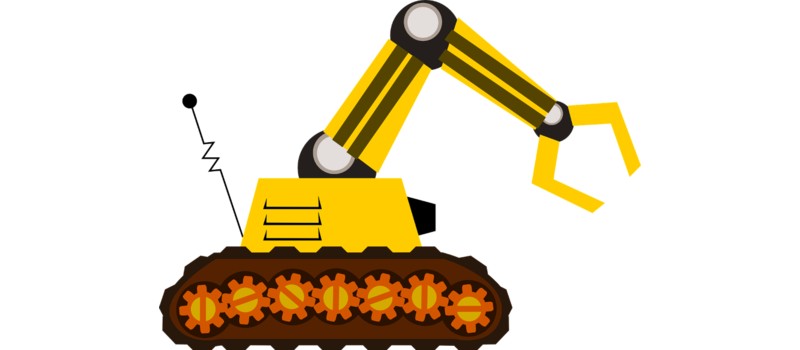Robots Taking Over Construction?
Construction is serious business. Historically, we have adapted many new technologies, to boost various processes in the industry. However, in construction, we have less chances of risks. It's not easy to do something, undo it, and redo it by another method. That would cost us a whole load of time, effort, money, and materials. The same of which, could have been saved for other important tasks. This has led us to one big problem. We're slow to adapt new technologies, and methods. We're hesitant, and we feel the need to be 100% sure any time we build something. The smallest of flaws could pose the biggest threats. If a new method arrives for something with risk, we're less likely to act upon it right away.
But today, we're moving towards the trend of digitalization. We know what works via our current methods, and we're very curious about how we can improve things further. Among the many things that come with digitalization, is the trend of using robots for numerous tasks.
Quite frankly, these construction robots are not perfect yet. But we're headed in the right direction, with their development. As they get matured and further enhanced, they can prove to be quite beneficial for the industry.
Two reasons companies should definitely consider investing in these could be:
- A robot can do the job with more precision
- A robot would require less effort and time, to get more work done
The Types of Construction Robots
Different types of construction robots are designed for unique tasks. Many are being developed, Some of them are as follows:
3-D Printing Robots
One of the main types, is 3D-printing robots. 3-D printing is one of the most popular applications to enter the construction industry. This technology can change the fundamental process of construction since it can accelerate production and reduce waste materials. It has the amazing capability of putting up building structures on demand.
Brick-Laying Robots
Another great type is brick-laying robots. They too improve the quality of the construction work. Most of the bricklaying robots utilize arms of industrial robots to assemble the masonry structure of the building. They're quite efficient, and are suitable for large construction projects with tight deadlines.
Drones
Drones too are quite popular in the feild of construction. They're used for drone mapping, to generate 3-D models of construction sites. Plus, various other complicated tasks, such as contour construction, surveying, 3D scanning, transportation, etc.
Demolition Robots
How can we not talk about this one? These too have created a hype about themselves. Using robots for demolishing large structures and buildings can accelerate the demolition process. These robots are much safer and cheaper in demolishing concrete structures, than traditional demolition crews.
Autonomous Vehicles
When you hear "autonomous vehicles", you may assume self-driving cars. Same concept, bit different. Self-driving vehicles are also being developed today, to roll around on construction sites for various reasons. They can be used in combination with drones for better 3-D modelling, site surveillance, transporation of goods, and much more.
In Conclusion
These are great uses for robots in construction. But that brings us to the big questions. Will this end jobs for construction workers? If we adapt to these things, would it be harmful for the common man? These are great inventions for projects, but what impact will they have on a regular construction worker? Will robots eventually take over alll of construction?
For the most part, you don't need to worry. As with most technology, these will only help the current workers improve their efficiency and effectiveness. Some tasks will of course be handed to the robots, but at least for now supervision too will play a huge part. Most of these robots are still going through changes and improvements. While they're efficient, they're also prone to error or malfunctioning. This is why it's important for workers to be present at the time of its use. Even perfected models, will need supervision. But they'll take some of the work load off workers and help manage time better.
And in the future? As technology evolves, so does the requirement of human skills. Because only a trained professional can properly operate a complicated machine. Let's assume that in the future all work is done by robots. Even then, it will be a gradual process. Robots won't completely end jobs. But instead, as with all technology, they'll gradually change the requirements of a job. Today's construction worker is much different, from one that worked a century back. The job's still there. It's only the requirements of the job, that have changed with time.
Related Posts
Comments
By accepting you will be accessing a service provided by a third-party external to https://www.mbt-techserv.com/



